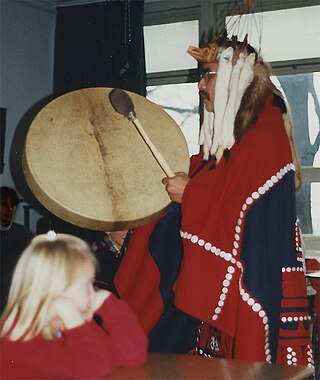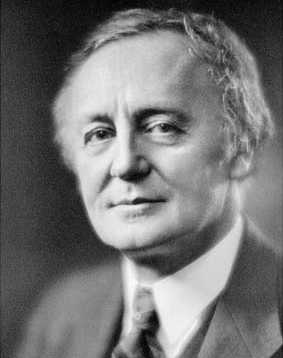
The Tsimshian are an Indigenous people of the Pacific Northwest Coast. Their communities are mostly in coastal British Columbia in Terrace and Prince Rupert, and Metlakatla, Alaska on Annette Island, the only reservation in Alaska.

The Nisga’a, often formerly spelled Nishga and spelled in the Nisga'a language as Nisg̱a’a, are an Indigenous people of Canada in British Columbia. They reside in the Nass River valley of northwestern British Columbia. The name is a reduced form of [naːsqaʔ], which is a loan word from Tongass Tlingit, where it means "people of the Nass River".

Charles Marius Barbeau,, also known as C. Marius Barbeau, or more commonly simply Marius Barbeau, was a Canadian ethnographer and folklorist who is today considered a founder of Canadian anthropology. A Rhodes Scholar, he is best known for an early championing of Québecois folk culture, and for his exhaustive cataloguing of the social organization, narrative and musical traditions, and plastic arts of the Tsimshianic-speaking peoples in British Columbia, and other Northwest Coast peoples. He developed unconventional theories about the peopling of the Americas.

The Tsimshianic languages are a family of languages spoken in northwestern British Columbia and in Southeast Alaska on Annette Island and Ketchikan. All Tsimshianic languages are endangered, some with only around 400 speakers. Only around 2,170 people of the ethnic Tsimshian population in Canada still speak a Tsimshian language; about 50 of the 1,300 Tsimshian people living in Alaska still speak Coast Tsimshian. Tsimshianic languages are considered by most linguists to be an independent language family, with four main languages: Coast Tsimshian, Southern Tsimshian, Nisg̱a’a, and Gitksan.
The Gispwudwada or Gisbutwada is the name for the Killerwhale "clan" (phratry) in the language of the Tsimshian nation of British Columbia, Canada, and southeast Alaska. It is considered analogous or identical to the Gisgahaast clan in British Columbia's Gitxsan nation and the Gisḵ'ahaast/Gisḵ'aast Tribe of the Nisg̱a'a. The Nisg̱a'a also call this group the Killerwhale Tribe, though the Gitxsan use the term Fireweed clan; Gisgahaast means literally "people of the fireweed."
The Ganhada is the name for the Raven "clan" (phratry) in the language of the Tsimshian nation of British Columbia, Canada, and southeast Alaska. It is considered analogous or identical to the G̱anada (Raven/Frog) Tribe of the Nisga'a nation in British Columbia and the Frog clan among B.C.'s Gitxsan nation. The Gitxsan also sometimes use the term Laxsee'le to describe the Frog clan.

Gitxsan are an Indigenous people in Canada whose home territory comprises most of the area known as the Skeena Country in English. Gitksan territory encompasses approximately 35,000 km2 (14,000 sq mi) of land, from the basin of the upper Skeena River from about Legate Creek to the Skeena's headwaters and its surrounding tributaries. Part of the Tsimshianic language group, their culture is considered to be part of the civilization of the Indigenous peoples of the Pacific Northwest Coast, although their territory lies in the Interior rather than on the Coast. They were at one time also known as the Interior Tsimshian, a term which also included the Nisga'a, the Gitxsan's neighbours to the north. Their neighbours to the west are the Tsimshian while to the east the Wetʼsuwetʼen, an Athapaskan people, with whom they have a long and deep relationship and shared political and cultural community.
The Gitga'ata are one of the 14 tribes of the Tsimshian nation in British Columbia, Canada, and inhabit the village of Hartley Bay, British Columbia, the name of which in the Tsimshian language is Txałgiu. The name Gitga'ata in the Tsimshian language means "people of the cane". The Gitga'ata, along with the Kitasoo Tsimshians at Klemtu, B.C., are often classed as "Southern Tsimshian," their traditional language being the southern dialect of the Tsimshian language. Most Tsimshian-speakers in Hartley Bay today, however, speak the form of the language shared by villages to the north. Their band government is the Hartley Bay Indian Band, aka the Gitga'at First Nation.
Kitsumkalum is an original tribe/ galts'ap (community) of the Tsimshian Nation. Kitsumkalum is one of the 14 tribes of the Tsimshian nation in British Columbia, Canada. Kitsumkalum and is also the name of one of their Indian Reserve just west of the city of Terrace, British Columbia, where the Kitsumkalum River flows into the Skeena River. Archaeological evidence places Kitsumkalum with property holdings (laxyuup/territories) in the Kitsumkalum Valley, down the Skeena River to the coast, the Zymagotitz River, areas around Lakelse Lake and many special sites surrounding coastal and inland areas of the North West Coast prior to 1846 and as far back as 5,000 years BP.
Kitselas, Kitsalas or Gits'ilaasü are one of the 14 tribes of the Tsimshian nation of British Columbia, in northwestern Canada. The original name Gits'ilaasü means "people of the canyon." The tribe is situated at Kitselas, British Columbia, at the upper end of Kitselas Canyon, which is on the Skeena River. It was once a great trading nexus, just outside and upriver from the city of Terrace. It is the most upriver of the 14 tribes and it borders the territory of the Gitxsan nation.
The Giluts'aaẅ are one of the 14 tribes of the Tsimshian nation in British Columbia, Canada, and one of the nine of those tribes making up the "Nine Tribes" of the lower Skeena River resident at Lax Kw'alaams, B.C. The name Giluts'aaw means literally "people of the inside". Their traditional territory is the area around Lakelse Lake, near present-day Terrace, B.C., at the Skeena River.
The Gispaxlo'ots are one of the 14 tribes of the Tsimshian nation in British Columbia, Canada, and one of the nine of those tribes making up the "Nine Tribes" of the lower Skeena River resident at Lax Kw'alaams, B.C. The name Gispaxlo'ots means literally "people of the place of elderberries." Their traditional territory includes an area on the Skeena River between present-day Terrace and Prince Rupert. Since 1834, when a Hudson's Bay Company trading fort was established at Lax Kw'alaams, they have been based there. Their chief Ligeex permitted the HBC to build on Gispaxlo'ots territory.
The Gitando are the youngest of the 14 tribes of the Tsimshian people in British Columbia, Canada. It is one of the nine of those tribes making up the "Nine Tribes" First Nation of the lower Skeena River resident at Lax Kw'alaams, British Columbia. The name Gitando means the people of weirs. Their traditional territory includes the watershed of the Exstew River, a tributary of the Skeena River. Since 1834, the Gitando have been based at Lax Kw'alaams, following establishment of a Hudson's Bay Company trading fort there. They are closely related to the Gispaxlo'ots, another of the Nine Tribes, who have an adjacent territory.

William Beynon (1888–1958) was a Canadian hereditary chief of the Tsimshian Nation and an oral historian; he served as ethnographer, translator, and linguistic consultant to many anthropologists who studied his people.
Henry Wellington Tate was a Canadian oral historian from the Tsimshian First Nation, best known for his work with the anthropologist Franz Boas.
The Laxgibuu or Laxgyibuu is the name for the Wolf "clan" (phratry) in the language of the Tsimshian nation of British Columbia, Canada, and southeast Alaska. It is considered analogous or identical to identically named clans among the neighboring Gitksan and Nisga'a nations.
Ligeex is an hereditary name-title belonging to the Gispaxlo'ots tribe of the Tsimshian First Nation from the village of Lax Kw'alaams, British Columbia, Canada. The name, and the chieftainship it represents, is passed along matrilineally within the royal house called the House of Ligeex. The House of Ligeex belongs to the Laxsgiik.
Walter George Wright was a Canadian hereditary chief of the Tsimshian from the community of Kitselas, near Terrace, British Columbia, whose extensive knowledge of oral history was published posthumously in book form as Men of Medeek.
Wilson Duff was a Canadian archaeologist, cultural anthropologist, and museum curator.

Kitselas Canyon, also Kitsalas Canyon is a stretch of the Skeena River in northwestern British Columbia, Canada, between the community of Usk and the Tsimshian community of Kitselas. It was a major obstacle to steamboat travel on the Skeena River.